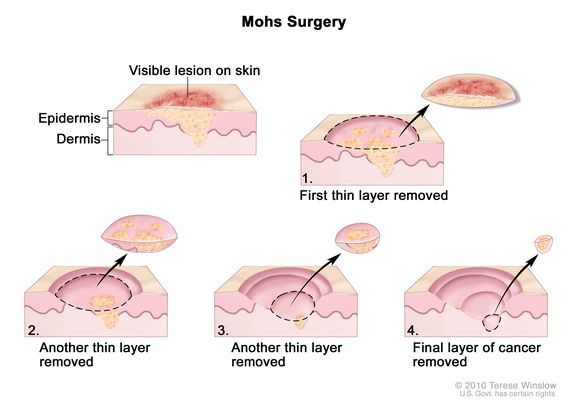Mohs micrographic surgery
(moze MY-kroh-GRA-fik SER-juh-ree)
A procedure used to treat certain types of skin cancer, penile cancer, mouth cancer (especially cancer of the lip), and soft tissue sarcoma of the skin. During Mohs micrographic surgery, the visible tumor and a thin layer of tissue around it is removed. The tissue is then checked under a microscope for the presence of cancer cells at all edges of the tumor. If cancer cells are seen, another thin layer of tissue is removed and checked under the microscope. This process is repeated until no more cancer cells are seen. Mohs micrographic surgery removes as little normal tissue as possible. It is most often used to remove skin cancers on the scalp, face, lip, ear, neck, hands, feet, and genitals, including cancer on or just under the skin of the penis. Also called Mohs surgery.
